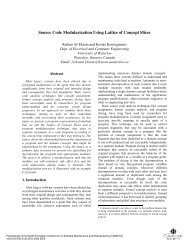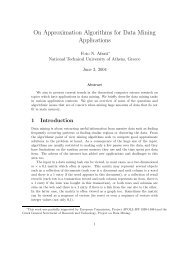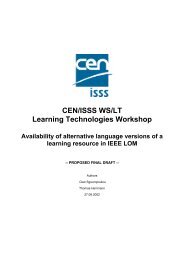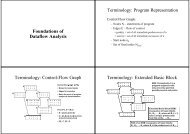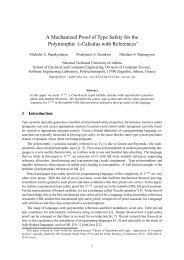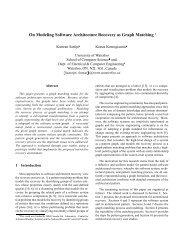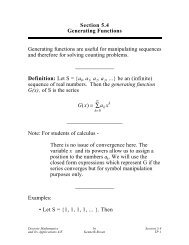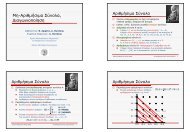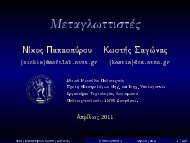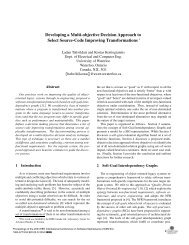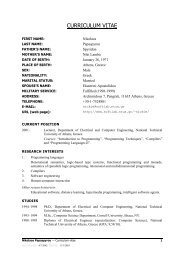Manual
Manual
Manual
You also want an ePaper? Increase the reach of your titles
YUMPU automatically turns print PDFs into web optimized ePapers that Google loves.
Chapter 8: Debugging Your Parser 91<br />
Bison then proceeds onto the automaton itself, describing each state with it set of items,<br />
also known as pointed rules. Each item is a production rule together with a point (marked<br />
by ‘.’) that the input cursor.<br />
state 0<br />
$accept -> . exp $ (rule 0)<br />
NUM shift, and go to state 1<br />
exp go to state 2<br />
This reads as follows: “state 0 corresponds to being at the very beginning of the parsing,<br />
in the initial rule, right before the start symbol (here, exp). When the parser returns to<br />
this state right after having reduced a rule that produced an exp, the control flow jumps<br />
to state 2. If there is no such transition on a nonterminal symbol, and the look-ahead is<br />
a NUM, then this token is shifted on the parse stack, and the control flow jumps to state 1.<br />
Any other look-ahead triggers a syntax error.”<br />
Even though the only active rule in state 0 seems to be rule 0, the report lists NUM as<br />
a look-ahead token because NUM can be at the beginning of any rule deriving an exp. By<br />
default Bison reports the so-called core or kernel of the item set, but if you want to see<br />
more detail you can invoke bison with ‘--report=itemset’ to list all the items, include<br />
those that can be derived:<br />
state 0<br />
In the state 1...<br />
state 1<br />
$accept -> . exp $ (rule 0)<br />
exp -> . exp ’+’ exp (rule 1)<br />
exp -> . exp ’-’ exp (rule 2)<br />
exp -> . exp ’*’ exp (rule 3)<br />
exp -> . exp ’/’ exp (rule 4)<br />
exp -> . NUM (rule 5)<br />
NUM shift, and go to state 1<br />
exp go to state 2<br />
exp -> NUM . (rule 5)<br />
$default<br />
reduce using rule 5 (exp)<br />
the rule 5, ‘exp: NUM;’, is completed. Whatever the look-ahead token (‘$default’), the<br />
parser will reduce it. If it was coming from state 0, then, after this reduction it will return<br />
to state 0, and will jump to state 2 (‘exp: go to state 2’).<br />
state 2<br />
$accept -> exp . $ (rule 0)



